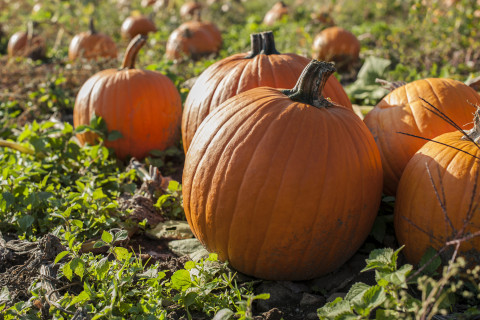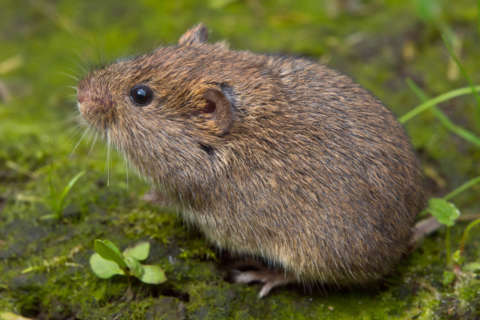Sharon in Centreville writes: “I love your sanity and approachability, and hope that you can offer some advice. The neighborhood dogs like to do their business on my lawn — despite my nicely asking their owners to stop. Is there anything I can spray onto the lawn that won’t hurt the dogs but will make it less attractive of a place?”
There are repellents designed for this purpose, Sharon, but I wouldn’t bet on their effectiveness. The repellents have to be applied weekly and/or after every rain. (And all the dogs I’ve known have run toward disgusting smells rather than away from them.)
I would set up a motion activated sprinkler and adjust it so that its blast of cold water falls right at the edge of the lawn at its furthest arc. That should spare pedestrians while still sending a strong message to those thoughtless dog walkers.
Motion activated sprinklers are very effective, and also keep deer, cats and regular thoughtless people off your property. Brand names that pack a good cold-water punch include “The Scarecrow” and the “Orbit” line.
Dog issues a tough task when the owners don’t care
Sharon in Centreville is in a tough spot.
In most cases when dogs use a lawn as their toilet, the “poopetrator” is never seen. In those more-usual situations, my advice is to put up a small fence and some signage. There are lots of great “don’t poop on my lawn!” signs available on All Sign Co’s website.
But the fact that she has already confronted the awful owners and the pooping hasn’t stopped is bad neighbor-dom at its worst.
Some thoughts:
- Put out a bunch of those little lawn flags that indicate pesticide application, and post a sign or two that says: “Warning; this lawn has been treated with a chemical dangerous to children and pets!” (And hope that these losers can read.)
- Put a “nanny cam” up outside, catch the owners in the act and post the video to YouTube.
- If you know where the “walkers” live, consider returning their “gifts” — to the first place they’ll step on as they exit their front door.
Mow your driveway weed woes away
John in Lovettsville writes: “I understand that you have simply allowed vegetation to grow over your gravel driveway and keep it mowed rather than constantly battle weeds. We’ve been considering the same thing, and rather than wait for ‘whatever’ to take over on its own, I’d like to sow the area with something suitable. The driveway and parking are surrounded by white pines and laurels; would fine fescue and Dutch white clover work?”
Not if the area is heavily shaded by those plants, John. Clover prefers growing in sun. Perhaps more to the point, the shade-loving “fine fescues” can’t handle foot traffic, much less Toyota traffic.
If you want to try and sow the area with something specific, I’d stick with a turf-type tall fescue. It’s a tough grass that grows slowly and will do well in any of your less shady areas — heck, it may simply take over. Either way, “other plants” will cover any bare spots.
Yes, that theoretically means weeds, but not in my case.
I glommed onto this idea decades ago after visiting a Frank Lloyd Wright house in Wichita that had a permeable paver and grass parking lot; and despite my not sowing anything, my “mowed driveway” is mostly lawn grass.
Heck, it looks better than my so-called lawn!
Where have all the robins gone?
Diane in Elkridge writes: “The robins in my garden have disappeared. I have enjoyed their company since April. They seemed to enjoy hunting for food in the garden and splashing in the birdbaths. Since they left, I have noticed more insect pests on my plants. It’s still warm out, I don’t have a cat and have not seen any dead birds in the yard. Any idea what happened to the robins?”
The classic “first sign of spring.” Robins are one of the first “migratory” birds to appear and breed in our area and they’re also one of the first to disappear, with August and September the big months that they gather in flocks to overwinter somewhere else.
Although that may mean someplace tropical like Mexico, the Audubon Society notes that the “somewhere else” could simply be a more wooded area a few miles away.
Still time to get birds to eat your bugs
If Diane in Elkridge wants to see if her robins are still nearby, she can put out fruit for them — things like half oranges, berries and chopped-up apples on a little platform. That’s the best food for attracting robins.
But if you want birds to eat your bugs, put up suet feeders to attract truly carnivorous birds like wrens, swallows, vireos, nuthatches and chickadees; especially chickadees.
Those cute little birds that run up and down the sides of trees are voracious carnivores.
Chickadees are the number one avian predator of pest insects — and darned cute. (Or did I say that already?)
Mike McGrath was Editor-in-Chief of ORGANIC GARDENING magazine from 1990 through 1997. He has been the host of the nationally syndicated Public Radio show “You Bet Your Garden” since 1998 and Garden Editor for WTOP since 1999. Send him your garden or pest control questions at MikeMcG@PTD.net.






